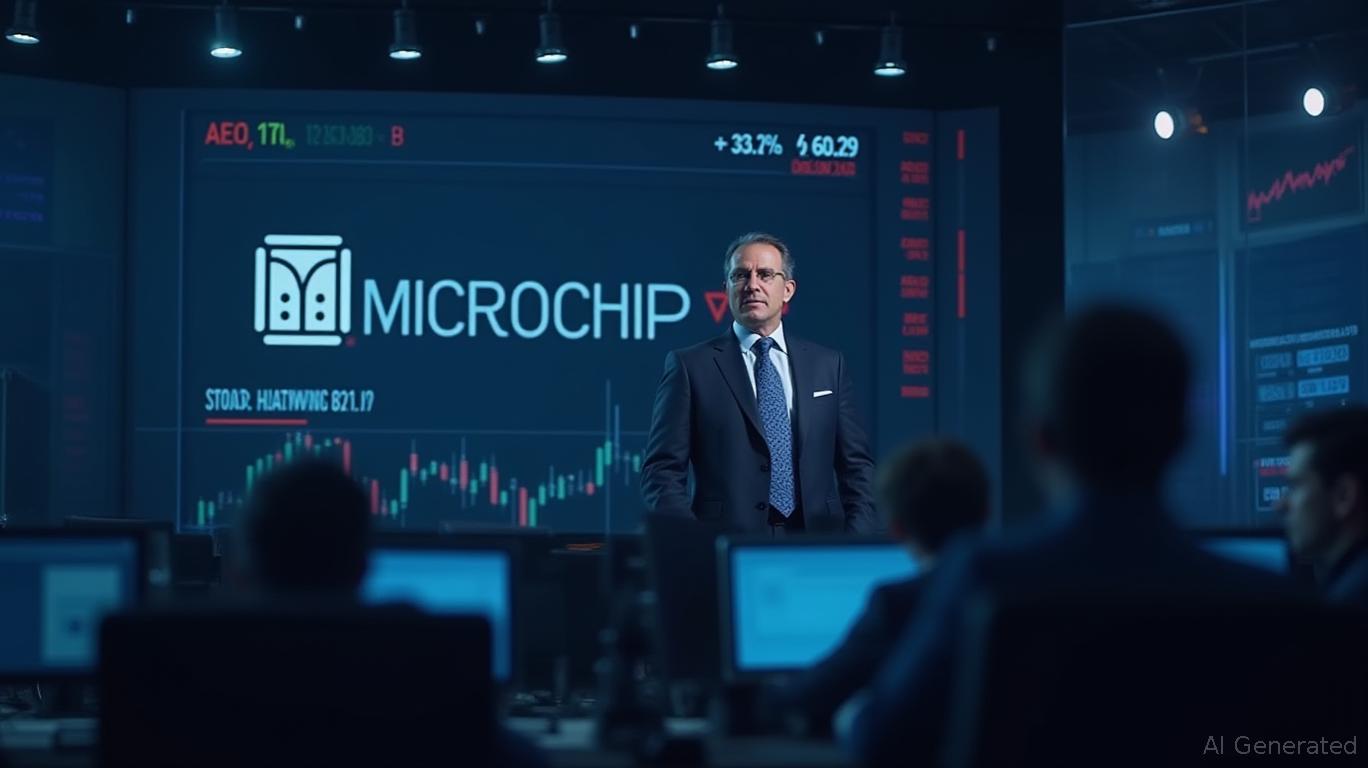Microchip Technology Rises 3.38% To Test Key $60.29 Resistance Level
Alpha InspirationTuesday, Jun 3, 2025 6:50 pm ET
Microchip Technology (MCHP) closed at $60.00, rising 3.38% on June 2, 2025, with volume of 9.31 million shares, as the stock tested its recent high near the $60.29 resistance level. This upward momentum will be assessed holistically using multiple technical frameworks below.
Candlestick Theory
The recent price action shows a bullish hammer formation on May 30 (low: $56.62, close: $58.04) followed by a decisive green candle on June 2 that engulfed the prior three sessions’ range. This signals rejection of lower prices near the $57.50 support cluster. Immediate resistance is observed at $60.29–$60.96 (May 20–21 highs), while robust support holds at $56.62–$57.43 (May 30 and June 2 lows). A confirmed close above $60.96 would invalidate the March–April downtrend .
Moving Average Theory
The 50-day moving average (MA) near $55.00 provides dynamic support, with the price consistently trading above it since mid-April. However, the 100-day and 200-day (approximately $63.00 and $67.00) remain overhead resistances. The current price position below longer-term MAs suggests persistent intermediate-term bearish pressure, though the golden cross formed in May when the 50-day MA crossed above the 100-day MA hints at potential trend reversal if momentum sustains.
MACD & KDJ Indicators
The MACD histogram shows improving bullish momentum since late May, with the signal line crossover occurring on May 27. Meanwhile, the KDJ oscillator exited oversold territory (below 30) on May 27 and now approaches overbought conditions (K-line: 65, D-line: 60). This confluence suggests near-term upside continuation potential, though diverging signals emerge as KDJ nears overbought while MACD remains mid-cycle—warranting caution if bullish momentum stalls.
Bollinger Bands
Volatility expanded sharply during the May 12 surge (+10.18%), with price testing the upper band near $62.50. Recent sessions show bands contracting around $57–$61, indicating declining volatility. The June 2 close near the upper band ($60.90) signals short-term overextension. A consolidation phase between $58.00 (20-period MA) and $61.00 (upper band) appears probable before the next directional catalyst.
Volume-Price Relationship
The May 12 rally occurred on exceptional volume (20.9 million shares), validating the breakout above $55.00. Recent gains on June 2 (9.31 million shares) exceeded the 30-day average volume (8.82 million), confirming buyer conviction. However, the absence of climactic volume compared to May’s peak suggests upside may be capped near $61.00 until higher-volume participation emerges.
Relative Strength Index (RSI)
The 14-day RSI holds at 58, reflecting neutral momentum despite the recent price surge. It remains below the overbought threshold (70), leaving room for further upside. Notably, RSI diverged bullishly in late May when price made a higher low ($56.62) while RSI printed a higher trough (45). This supports the current recovery, though its neutral reading tempers aggressive bullish expectations.
Fibonacci Retracement
Applying Fibonacci to the April 8 trough ($35.34) and May 12 peak ($60.96): the 23.6% retracement at $54.91 anchored the May 23 reversal ($56.19 low). The June 2 close approaches the 100% extension level at $60.96. Confluence exists here with horizontal resistance and Bollinger’s upper band. A decisive break above $61.00 could target the 123.6% level near $64.50, while failure may retest the 38.2% support at $57.15.
Conclusion
Multiple indicators converge around the $60.96–$61.00 resistance: Bollinger Band containment, Fibonacci extension, and prior price highs. While momentum (MACD), volume confirmation, and RSI positioning suggest near-term upside potential, longer-term moving averages and the absence of extreme bullish volume warrant caution. Divergences are minimal, though KDJ’s proximity to overbought territory creates a nuanced risk profile. Probabilistically, consolidation between $58.00–$61.00 is favored before a decisive breakout or reversal. Traders should monitor volume surges above 12 million shares for directional confirmation.

Disclaimer: The news articles available on this platform are generated in whole or in part by artificial intelligence and may not have been reviewed or fact checked by human editors. While we make reasonable efforts to ensure the quality and accuracy of the content, we make no representations or warranties, express or implied, as to the truthfulness, reliability, completeness, or timeliness of any information provided. It is your sole responsibility to independently verify any facts, statements, or claims prior to acting upon them. Ainvest Fintech Inc expressly disclaims all liability for any loss, damage, or harm arising from the use of or reliance on AI-generated content, including but not limited to direct, indirect, incidental, or consequential damages.

Comments
No comments yet